2017 Lubec photo workshops: dates just announced
(See below)
Vintage New York, Vintage Paris
Like fine wines, images that are both evocative and rich
By Frank Van Riper
Photography Columnist
Two images from New York City fifty years ago. I made the first one in the early 60’s at McSorley's Ale House in lower Manhattan when I was a young student reporter at City College of New York--who also spent time in bars; the second is of a NYC subway yard in the north Bronx showing the dull grey trains that were the only means of transportation to most non-driving New Yorkers of the era, save for buses and feet. (Bikes back then were for kids and grocery store delivery guys; taxis were for special occasions.) Both images will be part of my next book, working-titled Recovered Memory--Vintage Images of New York and Paris. But the remarkable thing is that I was able to resurrect these photos at all.
 |
 |
| A gift from the digital gods: upper image was from a woefully underexposed Tri-X negative; bottom from faded, degraded Ektachome color slide. Both responded amazingly well to digital scanning and printing. (All images © Frank Van Riper. All Rights Reserved.) |
In working on a book that consists of photographs I made decades ago, I confronted one immutable fact: you can’t go home again. That is to say: on all my other books I could fall back on the fact that, if a particular image were subpar, I could retake it next time, so there never really was a problem. In the case of Recovered Memory, however, my universe of images was limited totally and absolutely to what I already had shot—a half century ago in New York City; forty years ago in Paris. Barring my sudden invention of a time machine, there simply was no way I could expand on this archive. So that meant I had to extract the most that I could—i.e.: cull the best photographs from a necessarily limited universe--under what just a few years ago might have been impossible circumstances.
And troglodyte though I may be (I still think my analog Leica M6 is the best camera on the planet) I must gratefully--even reverently--tip my hat to the digital technology that allowed me to turn near-hopeless negatives and slides into book-worthy images.
But first, some history.
Why New York and Paris? New York is simple: it’s what I am. I was born in Manhattan and grew up in the Bronx, just blocks from Yankee Stadium. New York is in my blood, along with egg creams, the Daily News and pastrami. Paris came more slowly, after my friends Neil and Carol Offen moved there for what would be a nine-year stay, first in Paris and then in Provence
“New York is nothing like Paris; it is nothing like London,” the writer E.B. White said in Here is New York, his eloquent post-World War 2 essay on the city. “[A]nd it is not Spokane multiplied by sixty or Detroit multiplied by four.”
Not to disagree with one of the great essayists of his century, but New York is like Paris, or at least it was. As I’ve written before, each city in its way is a beacon of style, culture, brashness and charm. In addition each is ever-changing and each bounces neatly off the other. I come naturally by my love of New York, having been born there. Though I have traveled and photographed in other parts of France, Paris always draws me back—as perhaps it would any New Yorker. I love Paris for its beauty, its panache, its elegant symmetry: and yes, even for its subway. The three shooting trips I made there some four decades ago produced a rich visual archive that at its best rivals my file on New York.
 |
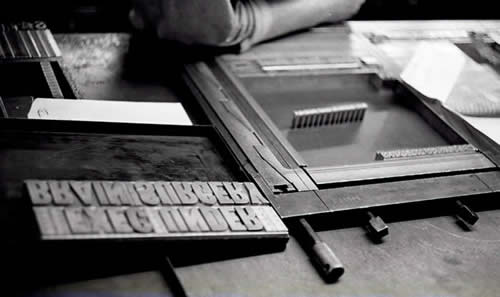 |
| Top: I was pleased to deliver a new take on the Eiffel Tower, arguably one of the most photographed icons in the world. The clouds were very cooperative for this abstract. Bottom: composing room, New York Post. I love the dull sheen of steel and lead--not to mention the fact that this way of making front pages is long gone. |
The ten-year difference between my New York and Paris work simply reflects what I was doing at the time. In the 60’s, when I shot my vintage New York photos, I was a student at CCNY and editor of its undergraduate newspaper, The Campus. Within ten years I already was a reporter in the New York Daily News Washington bureau, married (to my first wife) and regularly traveling to Paris, a city that drew me like a magnet.
Paris was a city where, unless you tried to have it otherwise, no one knew your name. One was free to wander its ancient streets, cross its beautiful bridges, meander along the Seine, in wonder and anonymity. The subway vaguely resembled New York’s but back then at least some of the trains ran on rubber tires, and you still could find the occasional wooden subway car, usually in the First Class compartments (an only-in-Paris anomaly that would fall flat on its ass in the Apple.) The rush hour crowds were very much like New York’s back then: people buried in their newspapers (not their iPads,) the atmosphere occasionally punctuated, it must be said, by body odor and garlic breath.
I say this not in condescension, for Paris also was a city that graced its subway stations with near full-size replicas of Rodin’s great sculptures.
“On any person who desires such queer prizes, New York will bestow the gift of loneliness and the gift of privacy,” said E.B. White. “[T]he residents of Manhattan are to a large extent strangers who have pulled up stakes somewhere and come to town, seeking sanctuary or fulfillment or some greater or lesser grail….No one should come to New York to live unless he is willing to be lucky.”
It is parallels like this between these two great cities that suggested my next book.
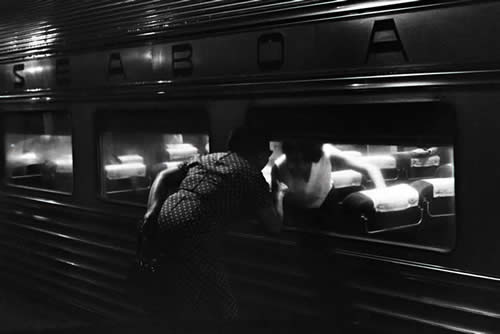 |
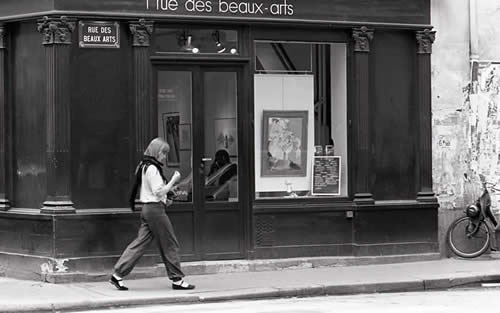 |
| It's only now, in looking at these two photos in juxtaposition, that I noticed the almost identical hand gesture: the first in 'Penn Station Farewell;' the second in 'Lady of Fashion/Paris.' |
But first I had to overcome some of my own early stumbles as a young photographer. My first film of New York, for example, was developed in a Kodak Day-Load Tank, an ingenious Rube Goldberg-like affair that, once threaded and closed, allowed one to load 35mm film directly from its cassette onto a developing reel without one having to be in the dark. That part was fine when it worked (it didn’t always.) But my agitation technique also was lame back then, so several rolls of film that I souped in the Day-Load Tank displayed a tell-tale line along the bottom of the negative strip indicating poor agitation. Happily, I was able to crop this out in virtually all of the final prints I made.
Still, even good Day-Load technique could not compensate for really poor initial exposure. The McSorley's pic, for example, is from a woefully thin Tri-X negative that I despaired I ever would be able to print in a traditional wet darkroom. And the subway image actually was made on what turned out to be very unstable Ektachrome-X color slide film. This meant that the vibrant colors of the original chrome had faded over decades to a dull purple, melting all the photo’s shadow detail into a stygian mush.
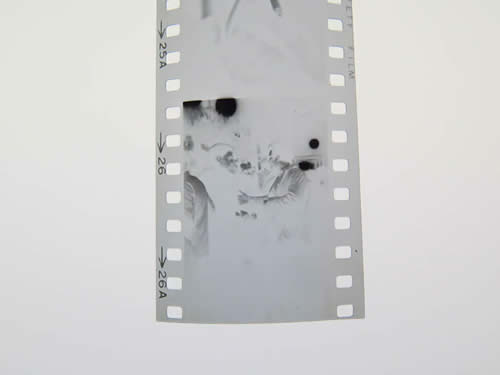 |
 |
| Top photo shows my badly underexposed negative from McSorley's. Regular darkroom prints from the neg lacked snap and contrast. Bottom shows what my once-terrific Ektachrome X image had become: a purple mess. |
That I was able to digitally scan both images to recover what I think is remarkable detail is tantamount to divine intervention.
Praise here for my Epson V750 Pro flatbed scanner that worked wonders scanning both positive transparencies, like the Ektachrome slide of the subway yard, or BxW negatives like the ones made at McSorley’s. The V750 (succeeded now by the V800) in effect sucked as much detail as possible out of the initial subpar “source material.” This in turn allowed me far more leeway than I ever could have in a conventional darkroom to manipulate tone, saturation, contrast and relative exposure levels in my final digital prints. Once the images were “developed” to my liking on my calibrated Mac desktop, I was able to produce gorgeous prints on Epson Hot Press Bright smooth matte paper with a Canon Pro 10 digital printer and its set of ten archival inks.
As I work on the archive of these vintage images, another fact becomes blindingly clear to me: the only constant in life is change. Everything will be different sooner or later, so that photos made years ago have intrinsic value simply because they reflect a time and conditions that are gone forever. Granted, this means that even a mediocre snapshot has merit for its insight into the past—but it might not be something I’d want to publish.
It’s when a vintage image also is a first rate photograph that the magic happens.
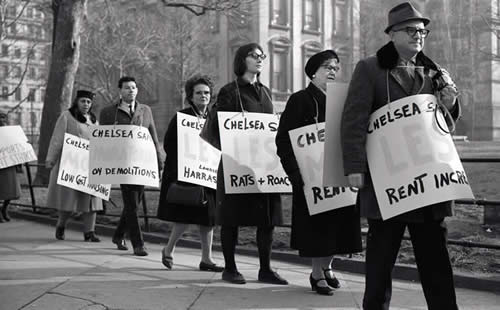 |
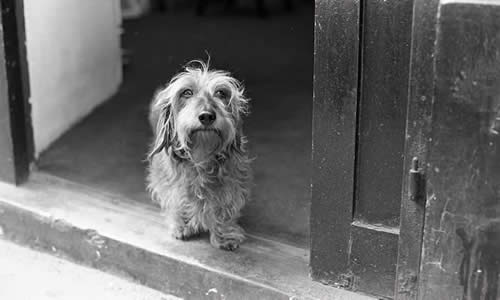 |
| Top: Protestors were much better behaved--and better dressed--in the New York of 50 years ago. Bottom: I saw this little guy in a Paris doorway and was delighted when he patiently stood for several portraits. |
-----
Lubec Photo Workshops at SummerKeys, Lubec, Maine -- Summer, 2017 dates just announced...
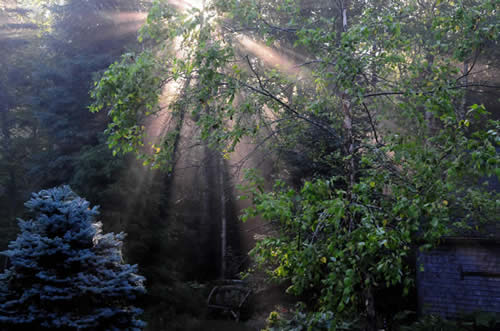
Daunted by Rockport??
Spend a week of hands-on learning and location photography with award-winning husband and wife photographer-authors Frank Van Riper and Judith Goodman. Frank and Judy will cover portraiture, landscape and documentary photography during morning instruction, followed by assignments in multiple locations including Quoddy Head State Park, Campobello Island, NB and the colorful town of Lubec itself. Daily critiques and one-on-one instruction. NO entrance requirement. Minimum age for attendance is 16. Maximum number of students each week is nine. Students supply their own digital camera.
The Lubec Photo Workshops debuted in 2009 and were a huge success for their low-key, no-pressure atmosphere. Note: Classes fill early.
2017 workshop dates: July 17-21; July 31-August 4; August 14-18.
Tuition payable through the SummerKeys Music Workshops: www.SummerKeys.com
Or contact us: GVR@GVRphoto.com
NEW: Master Photo Classes with Frank Van Riper
These intense, three-day, limited enrollment classes are aimed at the more advanced student, who already has taken a photo workshop and who is familiar with basic flash. With a maximum enrollment of just five, these classes are nearly half the size of our regular workshops. NB: last summer's Master Classes were fully booked almost immediately.
2017 Master Photo Class dates:July 24-26; August 21-23
Come photograph in one of the most beautiful spots on earth!
-----------
Van Riper Named to Communications Hall of Fame
 |
| Frank Van Riper addresses CCNY Communications Alumni at National Arts Club in Manhattan after induction into Communications Alumni Hall of Fame, May 2011. (c) Judith Goodman |
[Copyright Frank Van Riper. All Rights Reserved. Published 2/17]
|